Why You Must Prime Before Chalk Paint
Are you wanting to skip priming, before painting stained furniture with chalk paint? Why primer is critical to getting best results!
To prime or not to prime before chalk paint, that is the question right?
Or you may be wondering if you should prime before painting over stain or polyurethane.
Yes, I know it is an extra step but it is the MOST worthwhile prep before painting anything!
I’ll share with you my recent test NOT priming before painting furniture with chalk paint and all the issues it causes.
Do You Have to Prime Before Chalk Paint?
This makes me crazy because the paint manufacturers lead you to believe chalk paint is a one stop shop.
Major issues can happen if you don’t prime before applying chalk paint to stained furniture.
Yes, you MAY get lucky and get great results. Why risk it?
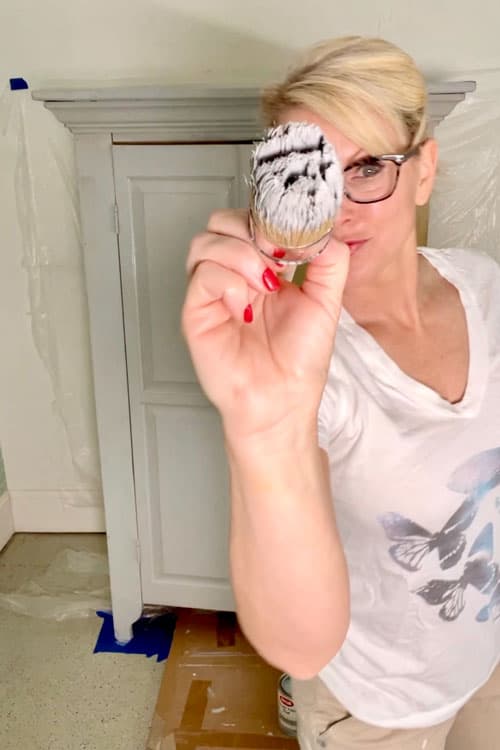
So many people write to me in a panic because they haven’t primed.
What is really SCARY is that many of the issues don’t appear until you wax or apply a clear coat.
Something that you HAVE to do is seal chalk paint with wax or a polyurethane to protect it.
All that work gets ruined in a matter of seconds!
Pin It for Later!
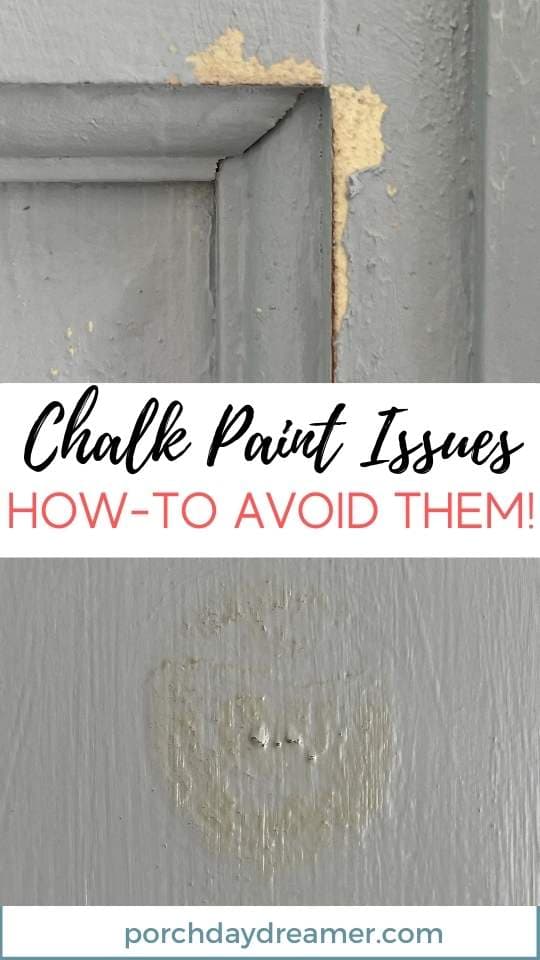
Failures not priming before chalk paint:
Here are the three primary issues that can occur, if you don’t prime before chalk paint.
- Poor adhesion
- Stain bleed through
- Tannin bleed through
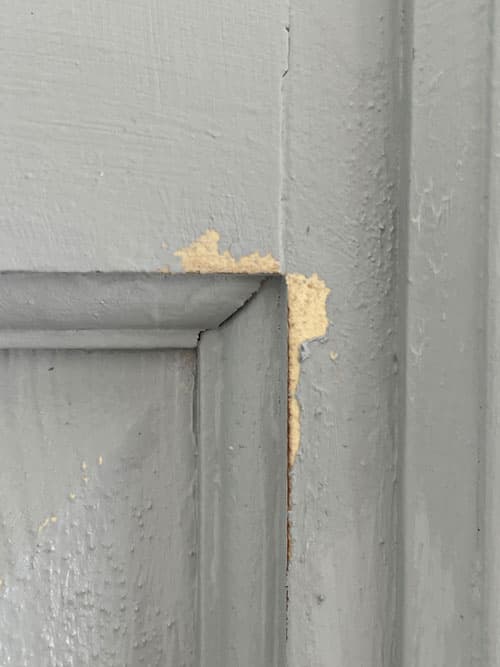
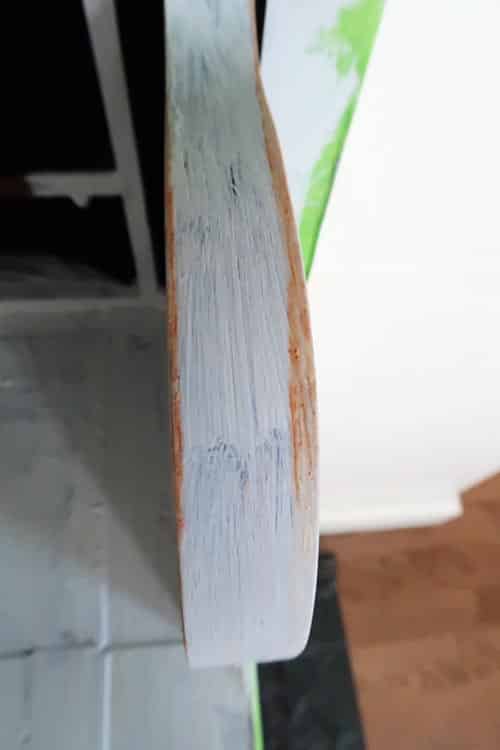
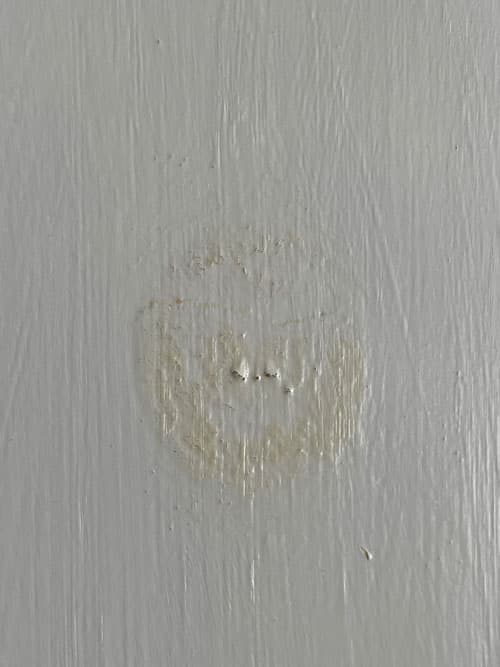
The only option to fix it? PRIME with a bonding primer over a clear coat.
OR if you waxed…sand it all off and start again.
Yes, these pictures are examples from my own chalk painting projects!
It can happen to anyone, but I wanted to prove it to you first by risking ruin during my own chalk paint project.
Here is a project where all went well without priming, but that is NOT the norm.
Yes! You Can Use Chalk Paint Over Stain
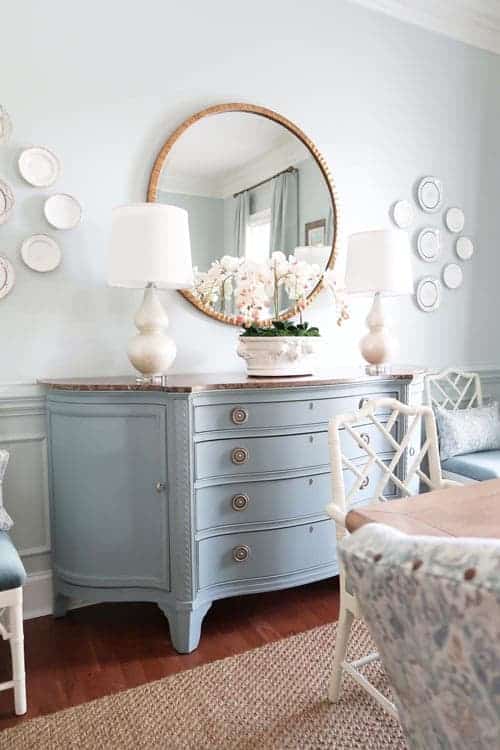
This is a fairly newer piece of furniture, so the water in the chalk paint didn’t trigger any bleed through.
When I painted an older piece from the 1960’s the brown streaks appeared like magic through the paint.
I quickly had to figure out how to fix the tannin bleed through!
My Solution to Stop Chalk Paint Bleed Through
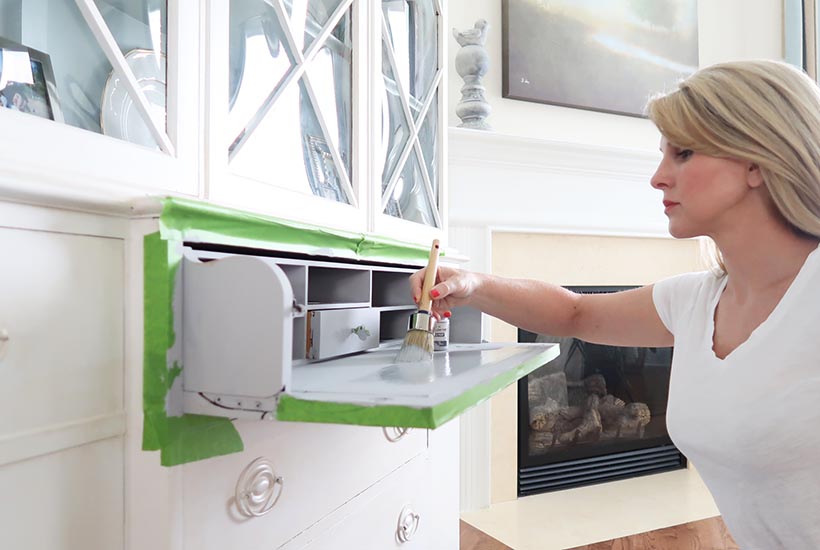
My point in sharing all of this is you just NEVER know what piece of furniture will be an issue.
I want to help you DO IT RIGHT THE FIRST TIME!
Using a primer is the best and right option every time you paint furniture – especially stained furniture.
What Happens if you Don’t Prime Before Chalk Paint?
During my recent garage makeover (see the garage reveal here) I decided to paint an old armoire.
I had a leftover can from my Krylon Chalky Paint Review, in Misty Gray.
It was the perfect color for the garage and I love using what I have on hand to save money!
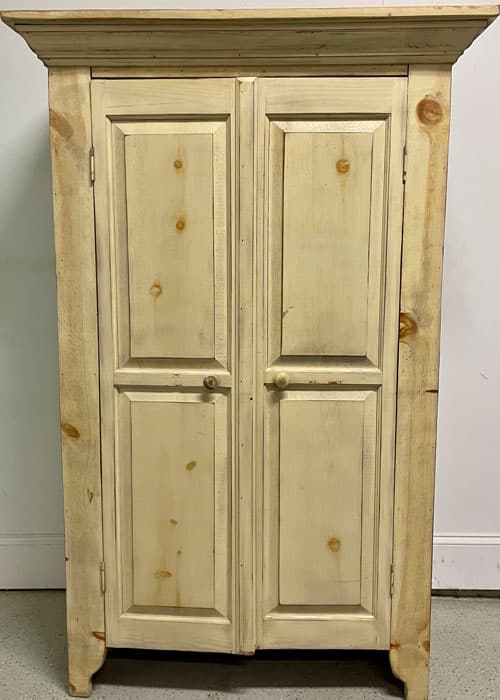
Here is the “garden shed” that I bought over 30 years ago and it needed a refresh.
It also was the PERFECT place to test applying chalk paint to an older piece of furniture without priming!
Since this was in my garage, I wasn’t attached to perfection…so if the chalk paint failed it was ok with me.
Contains hand selected products, with affiliate marketing links where I may make a small commission if a purchase is made. {full disclosure here}
Chalk Painting Steps
Here is exactly the steps I took to paint the armoire:
- Applied 1st coat of Krylon Chalky Finish paint, with a chalk paint brush.
- Dried 4 hours.
- Applied 2nd coat of Krylon Chalky Finish paint.
- Dried 2 hours.
- Applied 3rd coat for full coverage.
- Dried OVERNIGHT.
- Applied 1st coat of Minwax Polycrylic Matte.
- Dried 2 hours.
- Applied final coat of Minwax Polycrylic.
I followed all of the manufacturer’s instructions with regard to dry-time and re-coat time.
The chalk paint was applied in thin layers.
It looked PERFECT, after I applied the 3rd coat and left it to dry overnight.
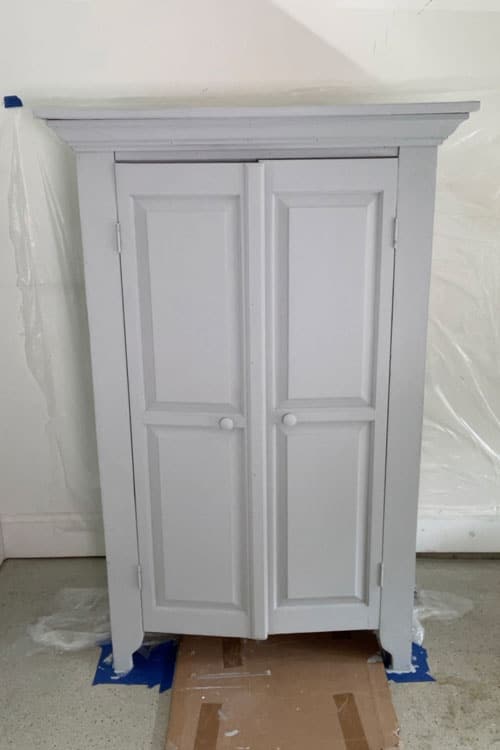
There were no issues with the chalk paint:
- Nice coverage
- Good adhesion to the surface and between coats
- No tannin bleed
- Knots were fully covered
When I applied the first brush strokes of the Minwax Polycrylic, the paint came off along the sharp edges.
After the first coat of the polyurethane, the knots started to appear.
When the 2nd coat of polyurethane dried, the tannin bleed was obvious in sections.
The larger knots appeared fully through ALL of the layers of paint and polyurethane.
Water in the polyurethane activated the tannin bleed!
Was I upset this happened? NO because I wanted to share this experience.
I’m happy to help you avoid this issue by making sure you prime before chalk painting any furniture.
You just never know when or how failure will occur.
PLEASE always use a bonding primer before painting ALL stained or polyurethaned furniture.
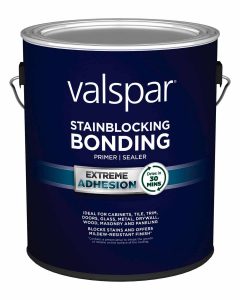
The one I recommend can be found at Lowe’s Home Improvement stores: Valspar Bonding Primer.
If you want to learn ALL about what bonding primer is and when to use it, read this!
When Bonding Primer is a Must Before Painting
At the end of the day, this piece is in the garage and looks SO much better even with the flaws.
It was shabby chic to begin with, so I don’t mind the extra “character”.
If this would have happened to my dining room credenza…well, that would have been devastating!
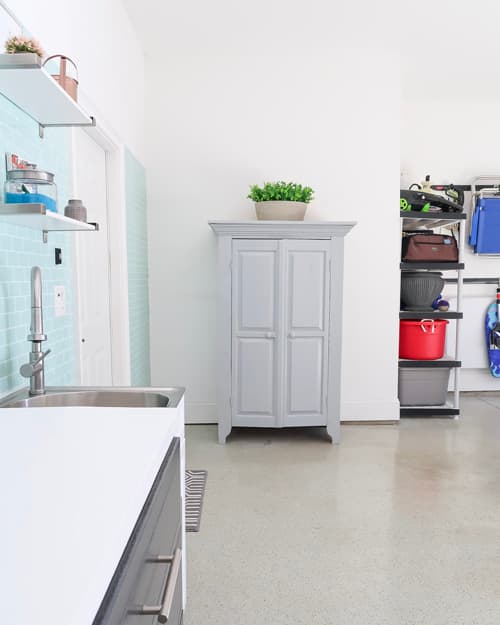
I love the new look in gray, so this was a win-win scenario.
You get a nice lesson in why primer is so important, when painting furniture.
I got to makeover and upcycle one of the very first pieces of furniture I purchased.
The truth is chalk paint really isn’t my favorite option for furniture!
Want to know what is?
My Favorite Furniture Paint and Why
Paint is my passion, so I hope I helped you avoid a future disaster.
Cheers to beautiful results and gorgeous painted furniture!
I’d love if you would join the Porch Daydreamer fan club, so you never miss a post.
Here are more how-to paint posts!
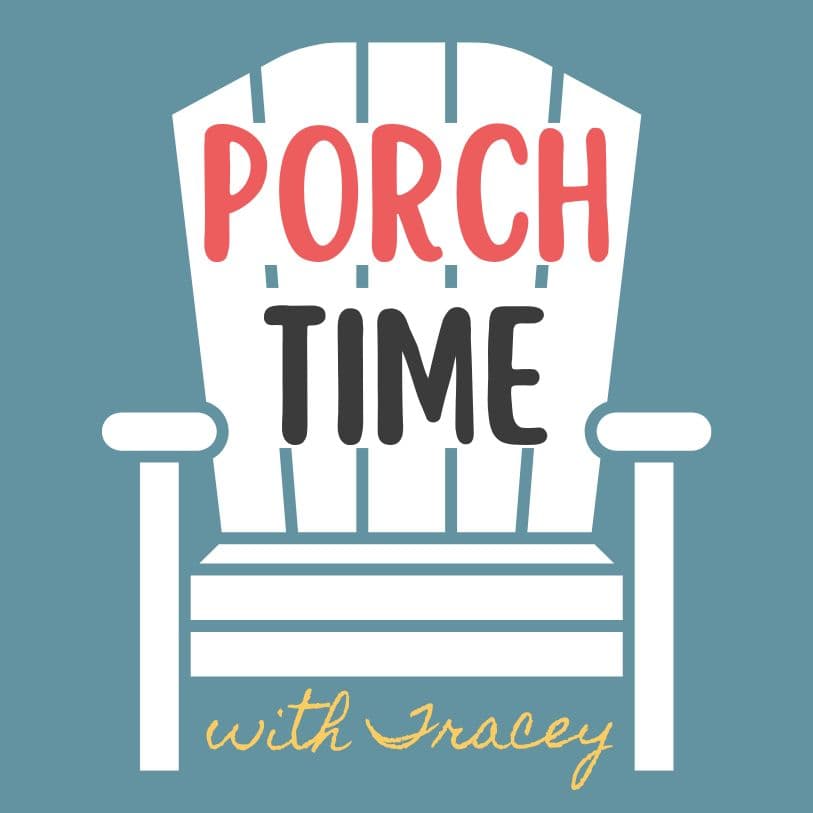
Sign-Up for my Weekly Emails!
Straight to your inbox sharing can’t miss decorating and painting tips for your home.
Please consider following me on Pinterest and Instagram for daily inspiration.
Until next time…
PORCH DAYDREAMER
Tracey

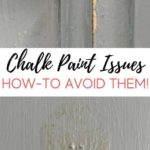
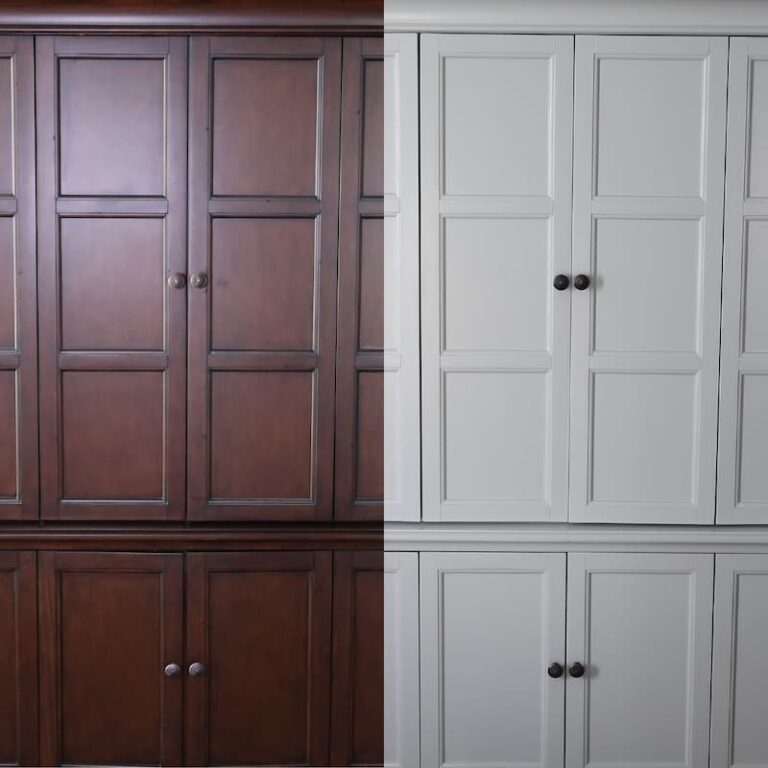
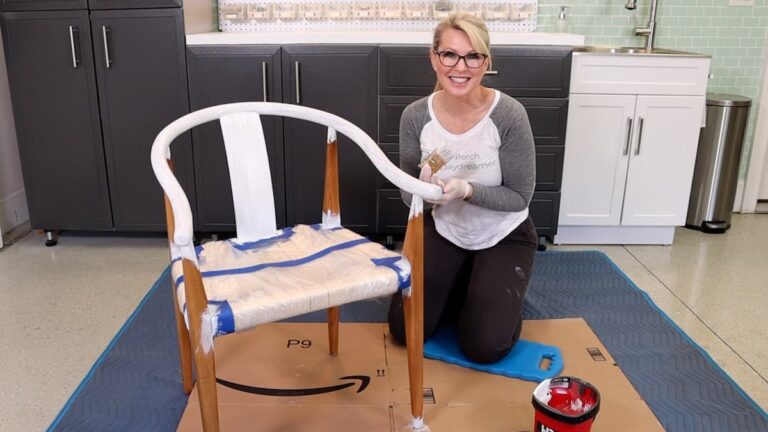
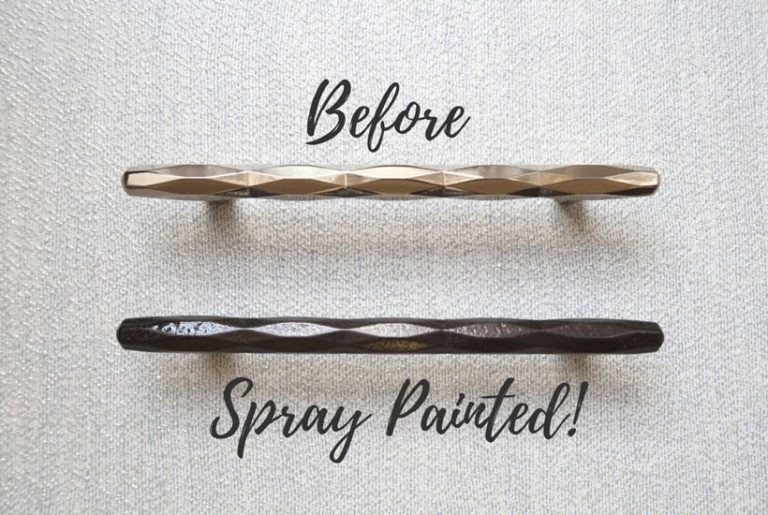
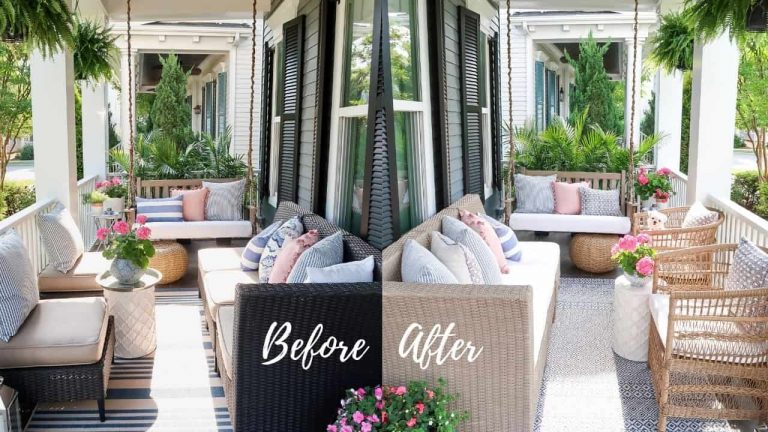
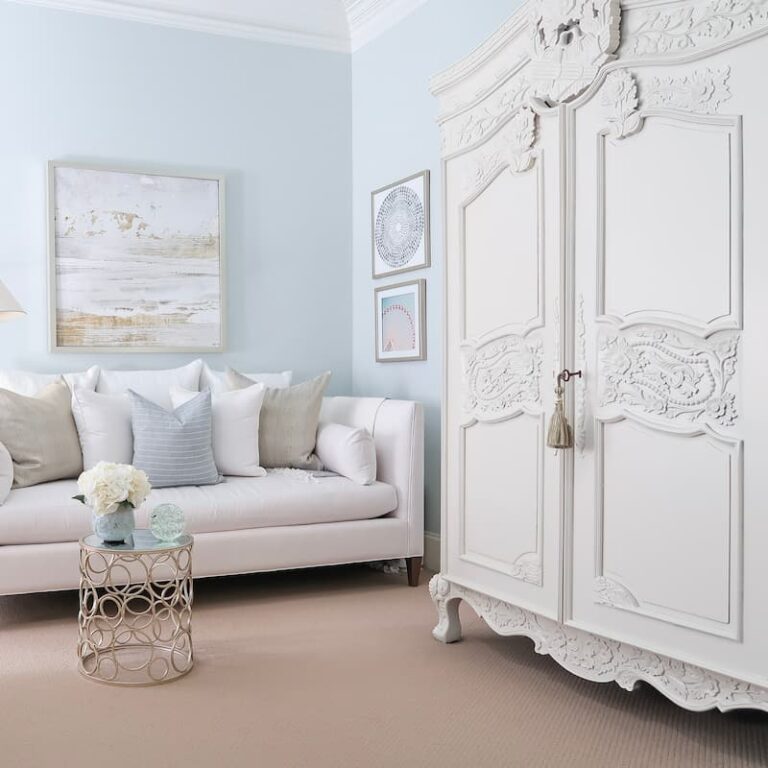
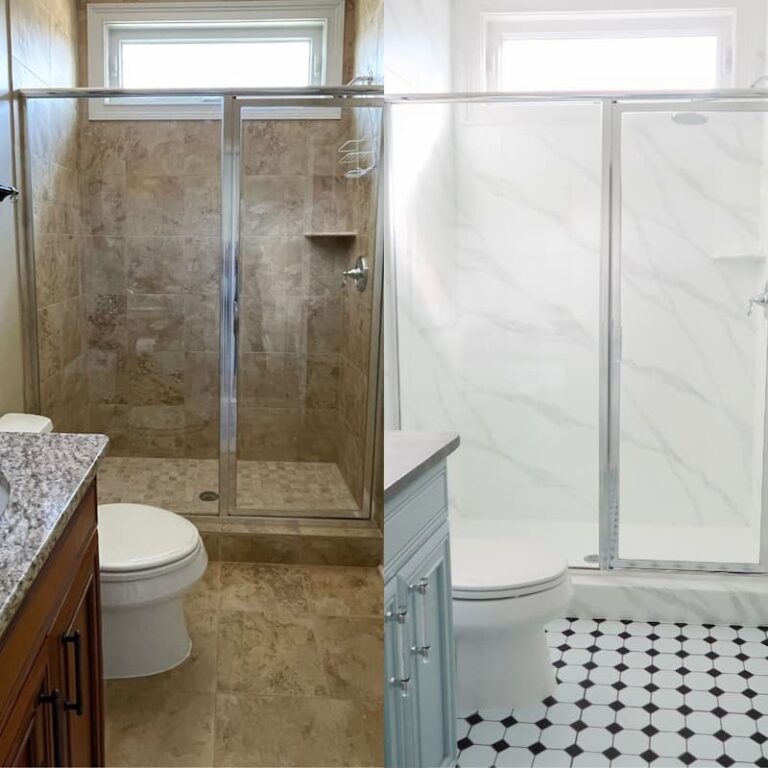
I want to paint the dresser and armoire in our bedroom. We bought the pieces at a furniture store that advertises “below retail.” The construction is great; we’ve moved them 3 times without trouble. It doesn’t appear that there’s any kind of finish on top of the stain. It’s a very matte finish. It’s a very RED stain. We plan to use blue, gray, or even black to modernize it. If I’m right about nothing over the stain, are there any extra steps we should do before priming & painting? Thanks so much! I’m so excited to have found your website.
Hi, Lisa! Glad you found me too. Here is the best tutorial to use to paint your furniture. It covers all of the steps with lots of pictures 🙂 https://porchdaydreamer.com/beginners-guide-paint-furniture/
This is the easiest explanation I’ve seen, Thanks!
Yay! Glad it helps 🙂
Thanks for sharing that is definitely going to help me as I want to paint my thrifted wardrobe.
Definitely, and it’s worth the time to prime 😉
I use Valspar Bonding primer before painting stained baseboards. I actually did two coats of primer. I still had a lot of stain bleed through. I did not sand them before the primer which I guess I should have done. Did I miss that step in your directions somewhere?
You only need one coat of bonding primer, so two is more than enough. Are you seeing bleed through after painting? The stains will show through the primer, but once it dries they should be sealed. Try a small area with paint to see if they come through the paint.